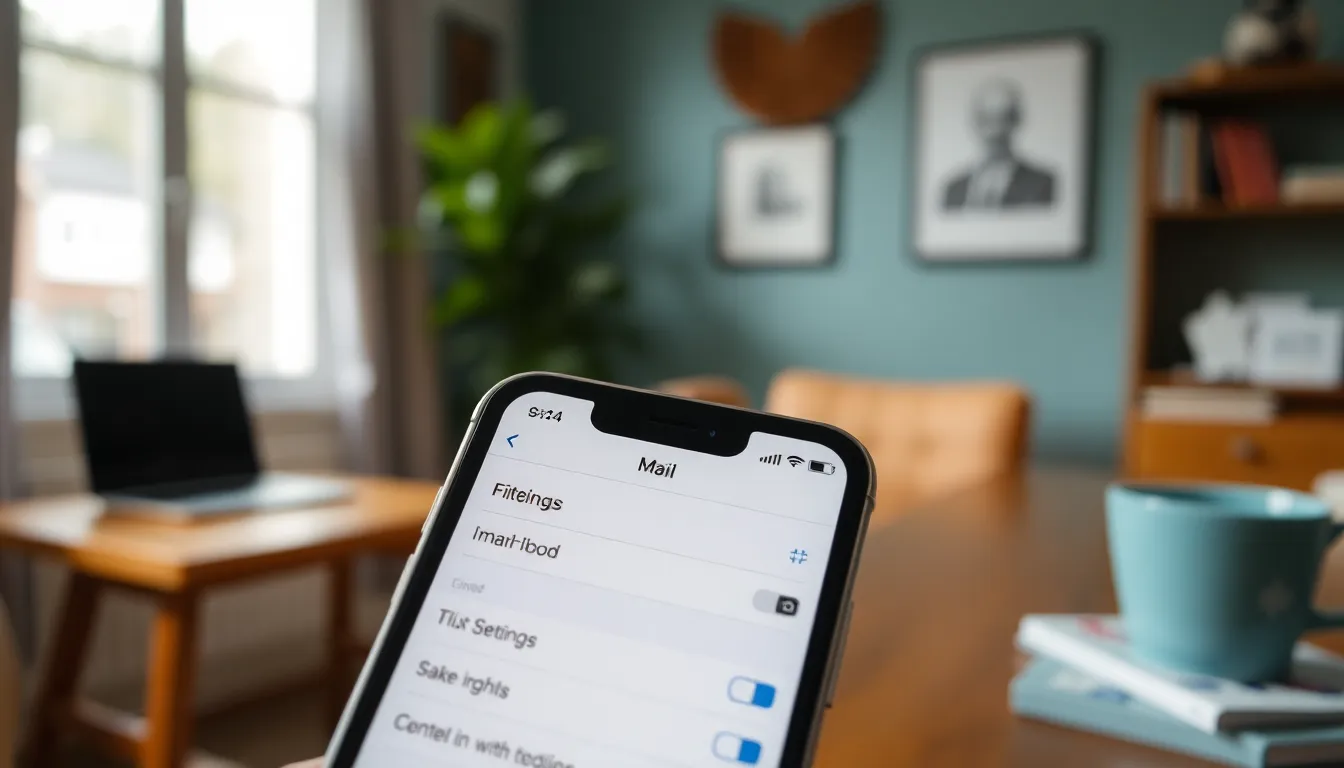Table of Contents
ToggleSpam emails can feel like an unwanted party crashing into your inbox, bringing along all the junk you never asked for. If your iPhone’s email app resembles a cluttered attic filled with unsolicited offers and questionable promotions, it’s time to take action. Nobody wants to sift through a sea of spam just to find that one important message from Aunt Edna.
Understanding Spam Emails
Spam emails clutter inboxes with unsolicited messages. Managing these distractions becomes crucial for effective communication.
What Are Spam Emails?
Spam emails refer to unwanted electronic messages sent in bulk. Such messages often include advertisements, phishing attempts, or malicious content. Users typically encounter them from unknown senders, and these emails rarely provide value. Common examples include promotional offers for dubious products, fake lottery notifications, and unsolicited requests for personal information.
Why Spam Emails Are Problematic
Spam emails complicate inbox management and reduce productivity. Important messages can easily get lost among these distractions. Risk of phishing attacks rises, as spam often contains malicious links or attachments. Users frequently experience increased frustration due to constant notification alerts. Additionally, spam can lead to compromised privacy if users inadvertently share personal information. As a result, taking steps to minimize spam becomes essential for maintaining a secure and efficient email experience.
Built-In iPhone Features

iPhones include several built-in features designed to combat spam emails effectively. These tools simplify managing your inbox and improve email experience.
Using Mail App Filters
Mail app filters automatically sort incoming emails based on user-defined rules. Users can create filters to direct unsolicited messages to specific folders or mark them as junk. Setting up a filter involves accessing the Mail app, navigating to settings, and selecting “Filters.” From there, users can choose to block emails from certain addresses or domains. These filters help prioritize important messages and minimize distractions from spam.
Adjusting Privacy Settings
Privacy settings play a crucial role in controlling spam on an iPhone. Users may want to enable features like “Hide My Email” to limit exposure to their primary email address. This option generates a unique, random email address that forwards messages to the user’s inbox without revealing their identity. Adjusting these settings ensures that only necessary communications reach the inbox, reducing spam effectively. Moreover, opting to disable mail tracking features adds another layer of protection against unwanted messages.
Third-Party Apps
Third-party apps offer effective solutions to manage spam emails on an iPhone. These applications enhance spam filters, helping to protect users from unwanted messages.
Recommended Anti-Spam Apps
- Cleanfox: This app helps users unsubscribe from unwanted newsletters, reducing inbox clutter.
- MailWasher: It allows users to preview emails before downloading them and blocks specific senders.
- SpamTitan: A robust option for businesses, it filters spam effectively while ensuring crucial messages remain accessible.
- Sanebox: It uses algorithms to analyze email habits, filtering spam and leaving only important emails in the inbox.
How to Choose the Right App
Selecting the right anti-spam app involves several factors. First, determine specific needs based on email usage patterns. Consider user reviews to gauge effectiveness and reliability. Evaluate compatibility with the iPhone’s Mail app to ensure seamless integration. Check pricing structures to find options that fit a budget. Finally, assess customer support availability to resolve any issues that might arise.
Best Practices to Prevent Spam
Spam emails can overwhelm an inbox if not managed properly. Users can adopt certain practices to reduce their spam exposure effectively.
Tips for Safe Email Practices
Protecting personal information proves crucial in preventing spam. Avoid sharing email addresses publicly on social media platforms. Use unique email addresses for different services to minimize risk. Enabling two-factor authentication adds an extra layer of security. Regularly updating passwords also contributes to safeguarding accounts. Set email filters to block unwanted senders automatically. Lastly, always scrutinize emails before clicking on links or opening attachments.
Managing Subscriptions and Unsubscribing
Managing subscriptions helps maintain a clutter-free inbox. Review subscription emails periodically to assess necessity. Identify unwanted newsletters and promotional emails, then promptly unsubscribe. Use the “Unsubscribe” option usually located at the bottom of these emails. Consider utilizing tools like Cleanfox for streamlined unsubscription management. Limiting subscriptions reduces exposure to potential spam. Regularly checking subscription settings ensures control over received content. Taking these steps enhances organization and minimizes unwanted communications.
Taking control of spam emails on an iPhone is essential for a more organized and secure inbox. By leveraging built-in features like Mail app filters and privacy settings, users can significantly reduce unwanted messages. Exploring third-party apps offers additional layers of protection and management options tailored to individual needs.
Implementing best practices such as safeguarding personal information and regularly reviewing subscriptions further enhances email security. With these strategies in place, users can enjoy a streamlined email experience, allowing them to focus on what truly matters without the distraction of spam.







